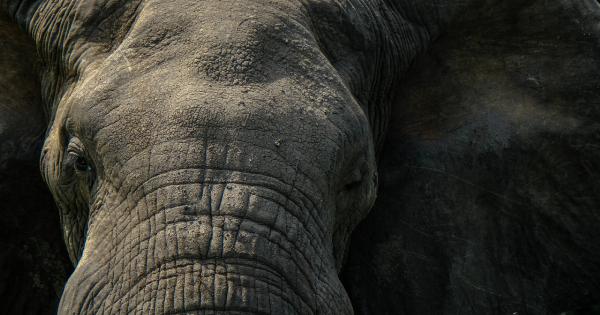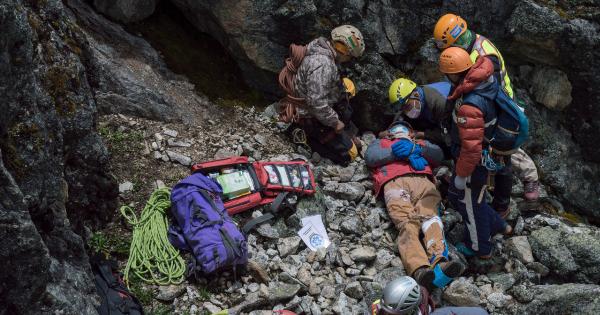Albatrosses are majestic seabirds found in the Southern Ocean and the North Pacific Ocean. These birds are known for their impressive wingspans, which can reach up to 11 feet, making them the largest of all flying birds.
Albatrosses have intrigued scientists and researchers for decades due to their unique behavior, especially their long-distance migrations and complex social structures. Studying these incredible creatures has not only provided fascinating insights into their lives but has also offered important lessons that can be applied to various aspects of our own lives.
The Power of Adaptability
Albatrosses are highly adaptable birds that have developed several remarkable evolutionary strategies to survive in harsh and challenging environments.
For instance, they have a special gland located above their nasal tubes that allows them to excrete excess salt ingested from consuming ocean water. Additionally, their streamlined bodies and long, narrow wings enable them to effortlessly glide for thousands of miles without expending much energy.
This adaptability of albatrosses teaches us the importance of being flexible and resilient in the face of adversity.
The Significance of Social Bonds
Albatrosses exhibit complex social structures, forming lifelong bonds with their mates. These monogamous pairs engage in elaborate courtship rituals, which often involve intricate dances and vocalizations.
Once they find a partner, they remain together for life, which can span several decades. This strong sense of loyalty and companionship in albatrosses highlights the significance of nurturing and maintaining relationships in our own lives. It serves as a reminder of the value of love, trust, and commitment in fostering lasting connections.
Long-Distance Migrations
One of the most remarkable aspects of albatross behavior is their incredible long-distance migrations. These birds frequently undertake journeys covering thousands of miles across the oceans, utilizing the powerful air currents and winds.
Albatrosses have the ability to spend months at sea without ever touching land, which is a testament to their extraordinary endurance and navigation skills. From their migrations, we can learn lessons about perseverance, setting goals, and staying determined even when faced with daunting challenges.
Environmental Conservation
Albatrosses are deeply impacted by human activities and environmental changes. For example, the consumption of plastic debris mistaken for food has detrimentally affected their health and populations.
Their plight serves as a wake-up call for the urgent need to preserve and protect our oceans and the creatures that inhabit them. By studying albatrosses, we can gain a better understanding of the interconnectedness of ecosystems and the role we play in safeguarding the environment for future generations.
Parental Care and Responsibility
Albatrosses are dedicated parents, investing a significant amount of time and effort into raising their chicks. Both parents take turns incubating the egg and foraging for food, ensuring the survival and growth of their offspring.
This exemplary display of parental care highlights the importance of nurturing and providing for the younger generation. It serves as a lesson on the significance of responsibility, sacrifice, and ensuring the well-being of our children and future generations.
The Perils of Plastic Pollution
As mentioned earlier, plastic pollution poses a severe threat to albatrosses and other marine wildlife.
These birds often mistake floating plastic debris for food, resulting in severe consequences such as starvation, impaired reproduction, and even death. The devastating impact of plastics on albatross populations sheds light on the urgent need to reduce single-use plastic consumption, improve waste management systems, and promote recycling.
It reminds us of the necessity to adopt sustainable practices for the betterment of our planet.
Life Lessons from Albatross Courtship
The courtship rituals of albatrosses are intricate and beautiful displays of affection. These rituals involve synchronized dances accompanied by unique vocalizations.
The commitment and effort put into courtship remind us of the importance of making gestures to express love and appreciation in our relationships. Albatrosses teach us that cultivating romance and maintaining a sense of excitement can invigorate our connections and bring us closer to our loved ones.
Lessons in Resilience and Survival
Albatrosses face numerous challenges throughout their lives. From harsh weather conditions to encounters with predators, these birds have developed remarkable resilience and survival techniques.
By observing their behavior, we can learn to adapt to adverse circumstances, develop coping mechanisms, and maintain a positive outlook during difficult times. The resilience of albatrosses inspires us to persevere and find strength even in the face of adversity.
The Beauty of Nature
Albatrosses epitomize the breathtaking beauty of nature. Their graceful flight, elegant wingspan, and majestic presence captivate the hearts and minds of all who witness them.
By embracing the wonder and magnificence of these birds, we can learn to appreciate the beauty and significance of the natural world surrounding us. Albatrosses serve as a reminder to protect and cherish the irreplaceable marvels of our planet.
Conclusion
Studying albatrosses allows us to gain profound insights into their lives and behaviors. These incredible birds teach us important lessons about adaptability, social bonds, perseverance, environmental conservation, and the significance of family.
By taking inspiration from albatrosses, we can strive to live more fulfilling lives, fostering stronger relationships, and working towards a sustainable future for ourselves and future generations.






























